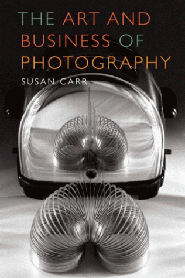 Most emerging photographers consider themselves generalists if for no other reason than that they want to work and any paying job coming their way sounds like a good one. But if this is where you’re at in your career, you’ll need to at some point do two things: first, become more of a specialist and second, be willing to let go of those early, low-paying clients. In this essay I’ll talk about the low-paying clients.
Most emerging photographers consider themselves generalists if for no other reason than that they want to work and any paying job coming their way sounds like a good one. But if this is where you’re at in your career, you’ll need to at some point do two things: first, become more of a specialist and second, be willing to let go of those early, low-paying clients. In this essay I’ll talk about the low-paying clients.
Let’s imagine the owner of the muffler shop on the corner of Main Street calls you to shoot some pictures of his shop for an ad he is running in the local weekly newspaper. We’ll call him Joe. He’s only willing to pay a small fee and you’ve done all you can to show him your value, why you’re better than everyone else, and most important, you’re convinced you’ve negotiated as far as you can with him on price. You do the shoot, he’s very satisfied, and he wants you to do more work. The fact remains though, he’s a low budget client.
I’m convinced there are two ways to make more money in any service business, including photography: work more or get better clients. I’ve taken the road of working to get better clients. More sophisticated clients understand copyright, understand licensing, and are in general much easier to work with. They are used to working with professionals in every aspect of their business.
Joe on the other hand sells a muffler and his customer owns it. Forever. The very concept of copyright is possibly foreign to him. He thinks since he’s paid you to take the photograph, he owns it. Licensing? That’s at the Department of Motor Vehicles!
As you begin to gain better clients, don’t be afraid to let go of Joe… ask me how I know. What happened to me will happen to you, guaranteed. You’ll have a day booked with low-paying Joe, and that great client you’ve been after for some time now, calls you asking you to shoot that very same day.
Don’t let Joe hold you back. At some point it’s no longer worth it to work for him. Instead, use that time working on your website, your physical portfolio, your other marketing efforts, tweaking your LinkedIn profile, or making a few phone calls or sending samples to prospective clients.
To move forward, you need to let go of whatever it is that’s holding you back. Even if it’s a client. The one exception, at least for me, is the low-paying client who is a rich referral source. To this day, I have one client who, even though I’ve not raised my rates for over ten years, consistently gives me quality referrals. She knows to keep my ten-year-old pricing “our little secret” and in fact pre-sells me as “one of the more expensive photographers in town, but definitely the best!”
I’ll be presenting my sales and networking program “No More Grumbling – Get Out There” in Dallas tonight, September 22nd, and in New Orleans on Tuesday, September 27th.
 I was speaking with New York Portrait Photographer Michelle Kawka recently and she shared a recent experience with regard to knowing how to price a recent wedding job she photographed.
I was speaking with New York Portrait Photographer Michelle Kawka recently and she shared a recent experience with regard to knowing how to price a recent wedding job she photographed. 


 Michael Albany, a
Michael Albany, a 




 groozi.com is a blog about negotiating and web marketing. Weekly posts are written primarily by me, Blake J. Discher, a
groozi.com is a blog about negotiating and web marketing. Weekly posts are written primarily by me, Blake J. Discher, a 
